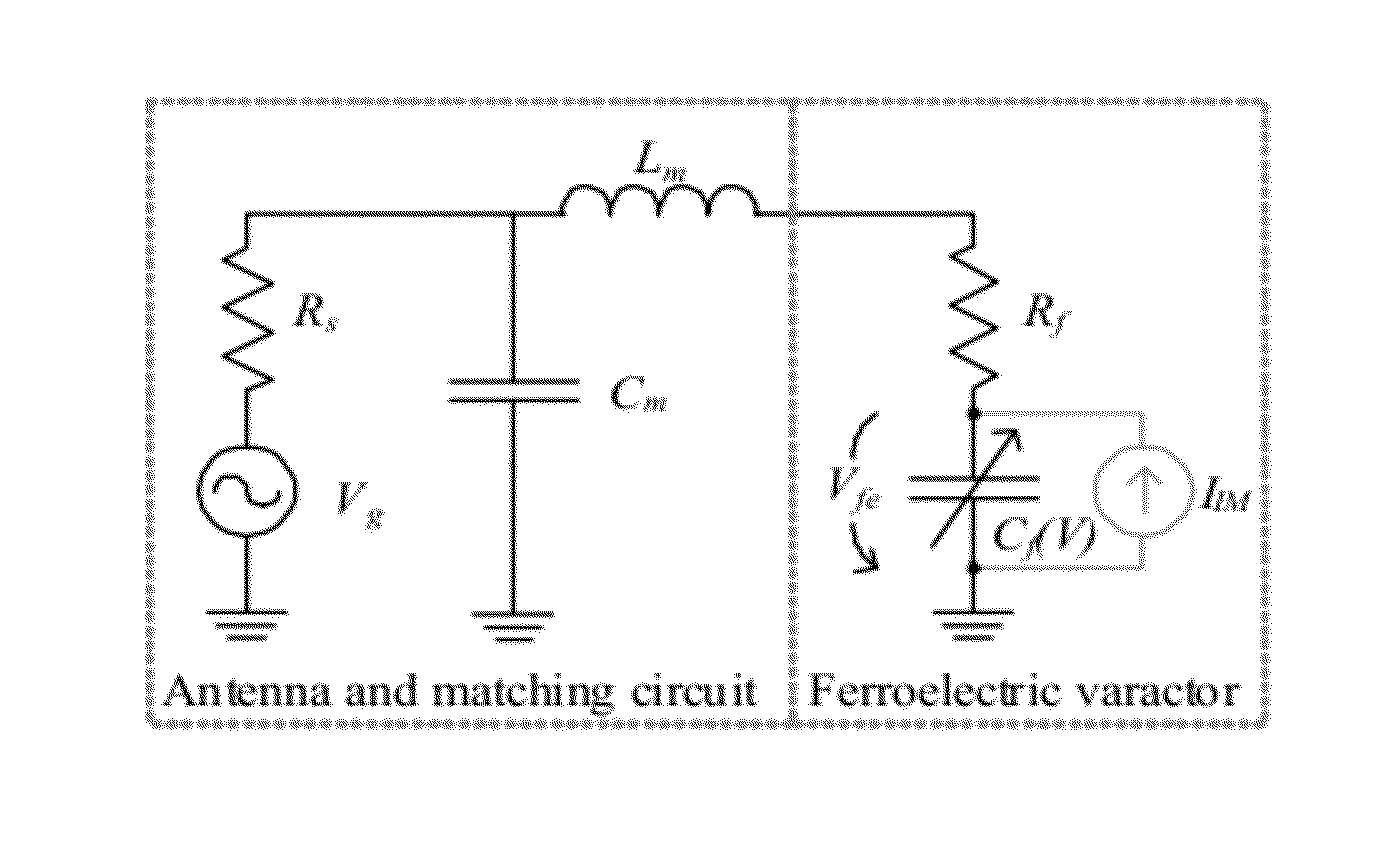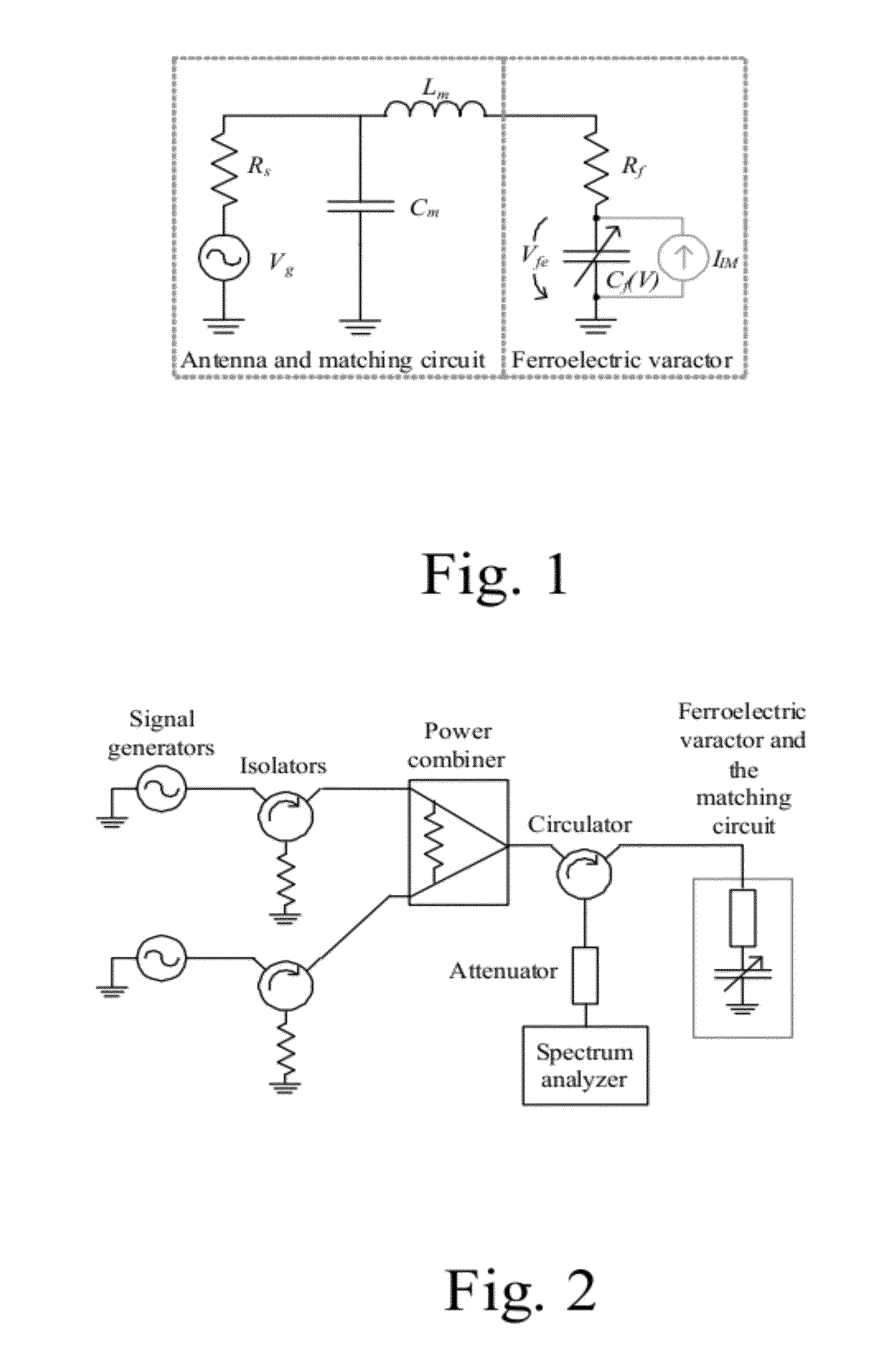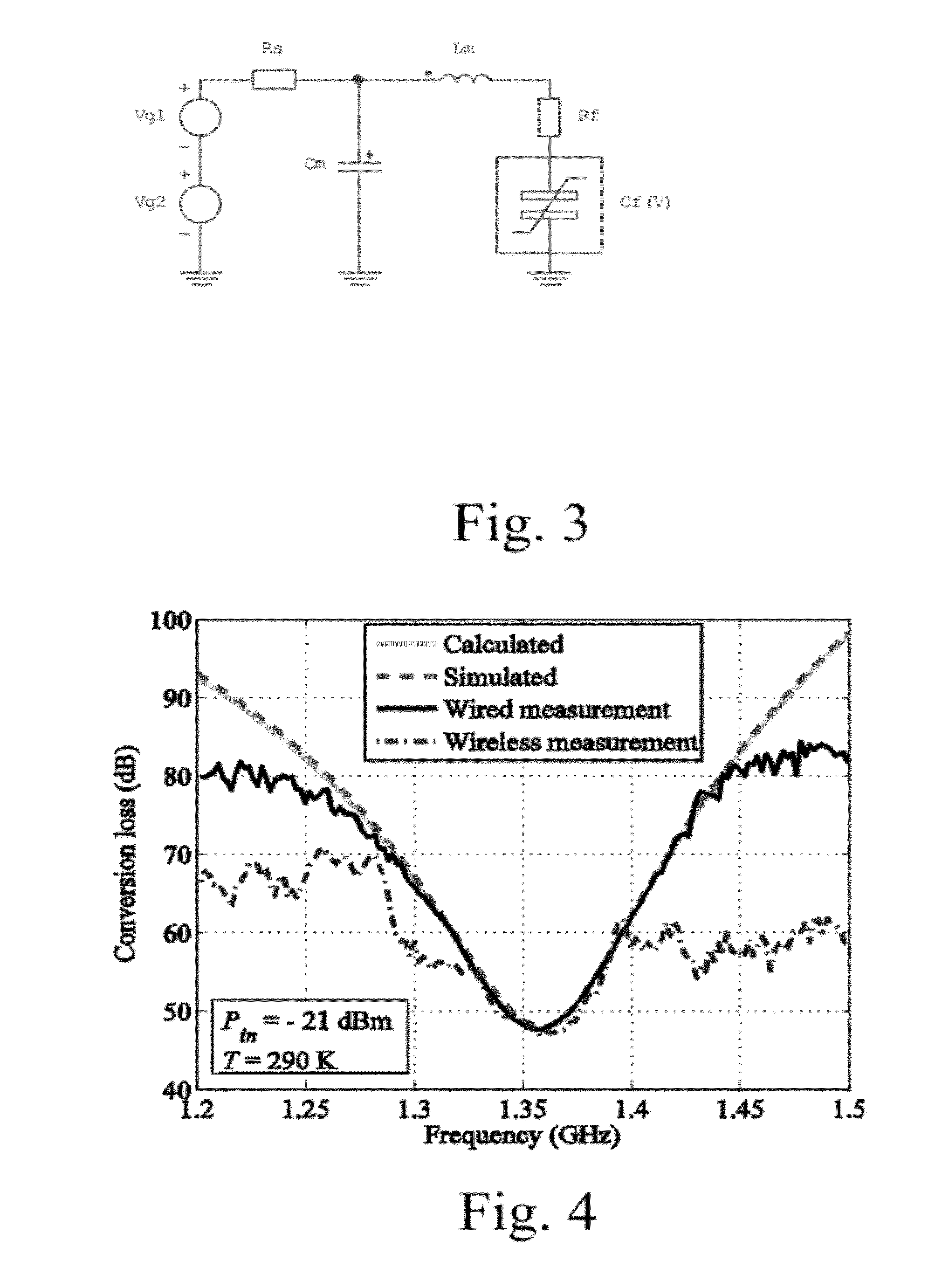Non-linear resonating sensor and a method
a non-linear resonating sensor and sensor technology, applied in the field of non-linear resonating sensors and methods, can solve the problems of low cost of rfid tags, difficult wired readout, and large potential of wireless sensors, and achieve low cost and complexity of wiring, cost-effectively, and low mass production
- Summary
- Abstract
- Description
- Claims
- Application Information
AI Technical Summary
Benefits of technology
Problems solved by technology
Method used
Image
Examples
Embodiment Construction
Operation Principle of a Sensor According to an Embodiment of the Present Invention
[0048]The sensor consists, or comprises of a ferroelectric varactor that is conjugate matched to an antenna. The equivalent electrical circuit of the sensor is shown in FIG. 1. The antenna is represented as an equivalent voltage source with the voltage Vg and the internal resistance Rs. The matching circuit consists, comprises, or comprises substantially of the shunt capacitance Cm and the series inductance Lm and may either be included into the antenna or it may be realized as a separate circuit. The resistance Rf represents the losses of the varactor and Cf (V) relates the non-linear capacitance to the voltage. The current source in parallel with the non-linear capacitance is used to represent the modulated current over the varactor in the following analysis.
[0049]The presented sensor can be realized using any non-linear element but the following analysis considers a Barium Strontium Titanate varact...
PUM
 Login to View More
Login to View More Abstract
Description
Claims
Application Information
 Login to View More
Login to View More - R&D
- Intellectual Property
- Life Sciences
- Materials
- Tech Scout
- Unparalleled Data Quality
- Higher Quality Content
- 60% Fewer Hallucinations
Browse by: Latest US Patents, China's latest patents, Technical Efficacy Thesaurus, Application Domain, Technology Topic, Popular Technical Reports.
© 2025 PatSnap. All rights reserved.Legal|Privacy policy|Modern Slavery Act Transparency Statement|Sitemap|About US| Contact US: help@patsnap.com



